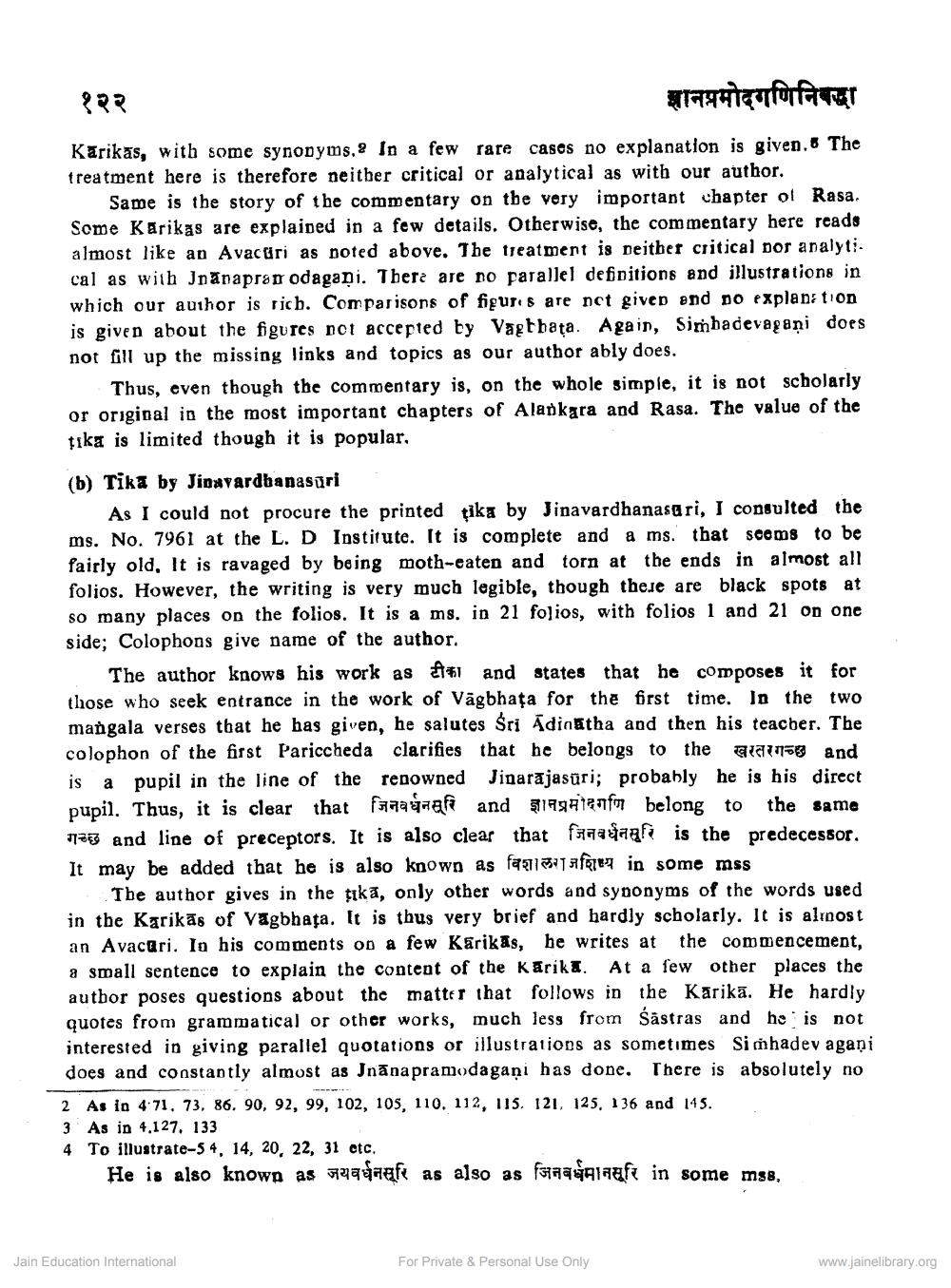________________
१२२
ज्ञानप्रमोदगणिनिवद्धा
Karikas, with some synonyms.? In a few rare cases no explanation is given. 8 The treatment here is therefore neither critical or analytical as with our author.
Same is the story of the commentary on the very important chapter ol Rasa. Some Karikas are explained in a few details. Otherwise, the commentary here reads almost like an Avac üri as noted above. The treatment is neither critical por analyti. cal as with Jnānaprap odagani. There are no parallel definitions and illustrations in which our author is rich. Comparisons of figures are not gived and do explanation is given about the figures not accepted by Vagthata. Again, Simbadevagani does not fill up the missing links and topics as our author ably does.
Thus, even though the commentary is, on the whole simple, it is not scholarly or original in the most important chapters of Alankara and Rasa. The value of the tika is limited though it is popular,
(b) Tika by Jinsvardhanasari
As I could not procure the printed ka by Jinavardhanasari, I consulted the ms. No. 7961 at the L. D Institute. It is complete and a ms. that scoms to be fairly old, It is ravaged by being moth-eaten and torn at the ends in almost all folios. However, the writing is very much legible, though these are black spots at so many places on the folios. It is a ms. in 21 folios, with folios 1 and 21 on one side; Colophons give name of the author.
The author knows his work as #1 and states that he composes it for those who seek entrance in the work of Vāgbhata for the first time. In the two mangala verses that he has given, he salutes Sri Adinatha and then his teacher. The colophon of the first Pariccheda clarifies that he belongs to the pain and is a pupil in the line of the renowned Jinarajasūri; probably he is his direct pupil. Thus, it is clear that faaagaafi and 3199#12for belong to the same 17853 and line of preceptors. It is also clear that fackagfi is the predecessor. It may be added that he is also known as fails TARETKI in some mss
The author gives in the çıkā, only other words and synonyms of the words used in the Karikās of Vagbhaga. It is thus very brief and hardly scholarly. It is almost an Avac@ri. Io his comments on a few Karikas, he writes at the commencement, a small sentence to explain the content of the Karika. At a few other places the autbor poses questions about the matter that follows in the Karikā. He hardly quotes from grammatical or other works, much less from Śástras and he is not interested in giving parallel quotations or illustrations as sometimes Simhadev agani does and constantly almost as Jnānapramodagani has done. There is absolutely no 2 As in 4:71, 73, 86. 90, 92, 99, 102, 105, 110, 112, 115, 121, 125, 136 and 145. 3 As in 4.127. 133 4 To illustrate-54, 14, 20, 22, 31 etc.
He is also known as tagfe as also as faaahhiaaft in some m3s,
Jain Education International
For Private & Personal Use Only
www.jainelibrary.org




